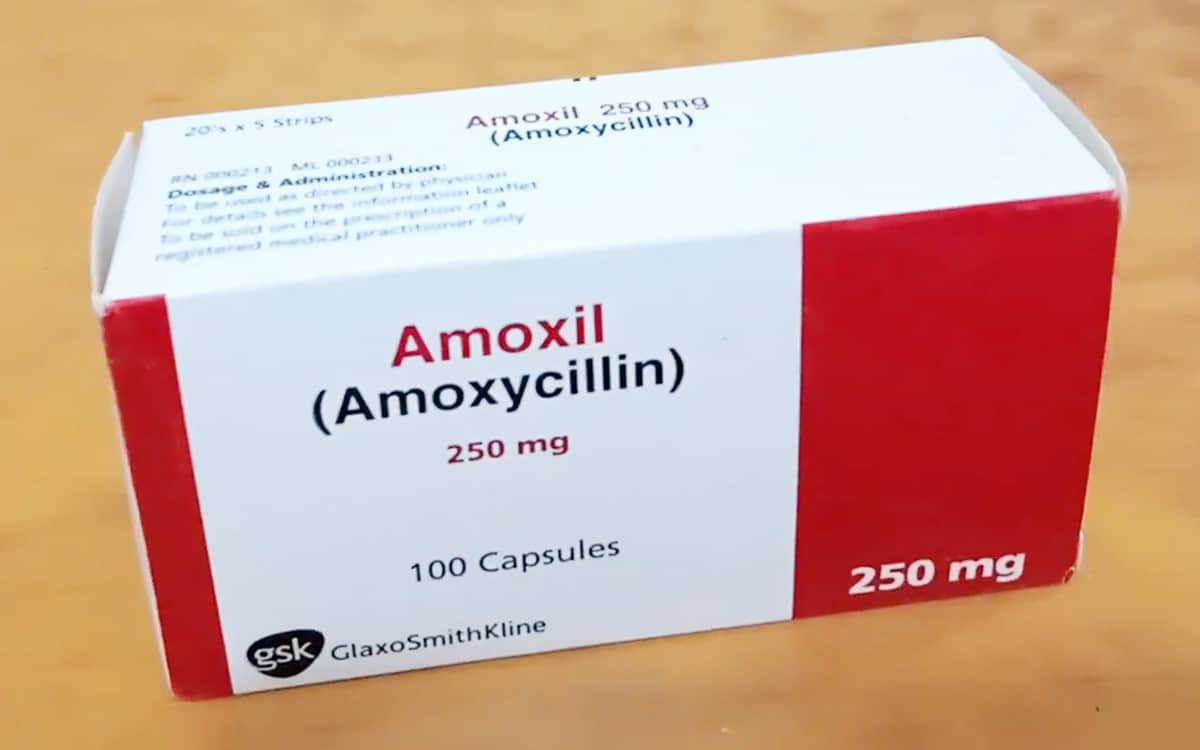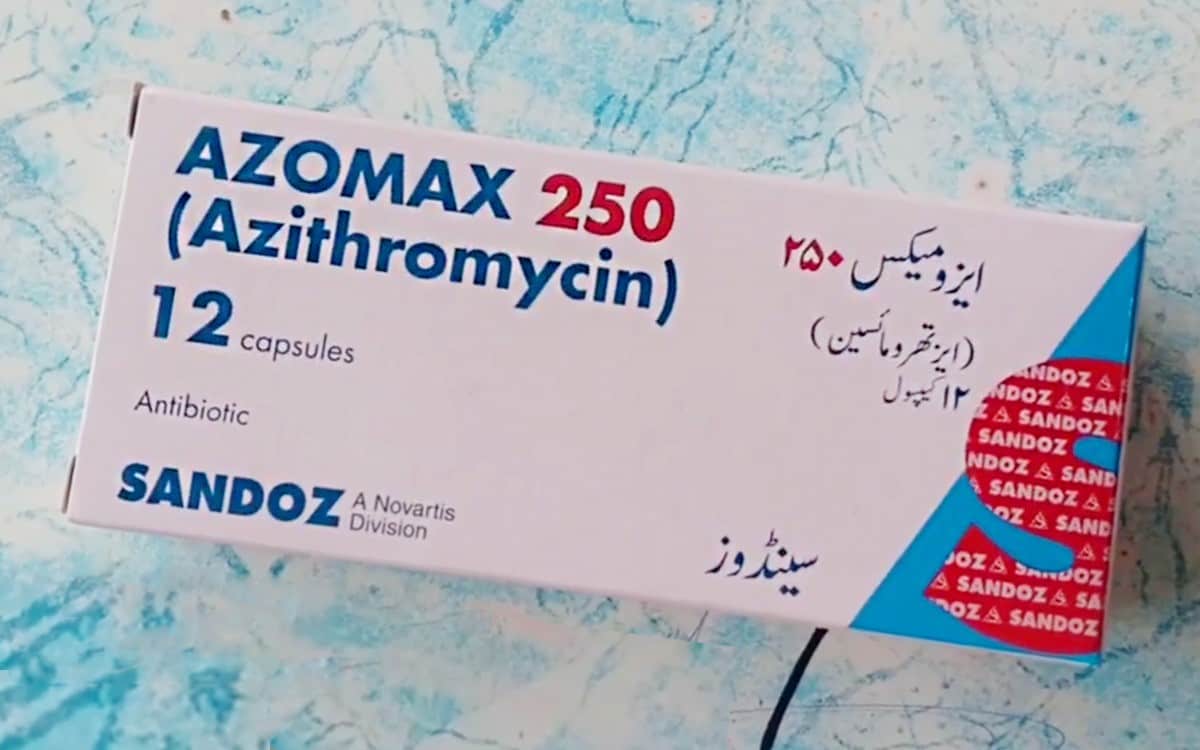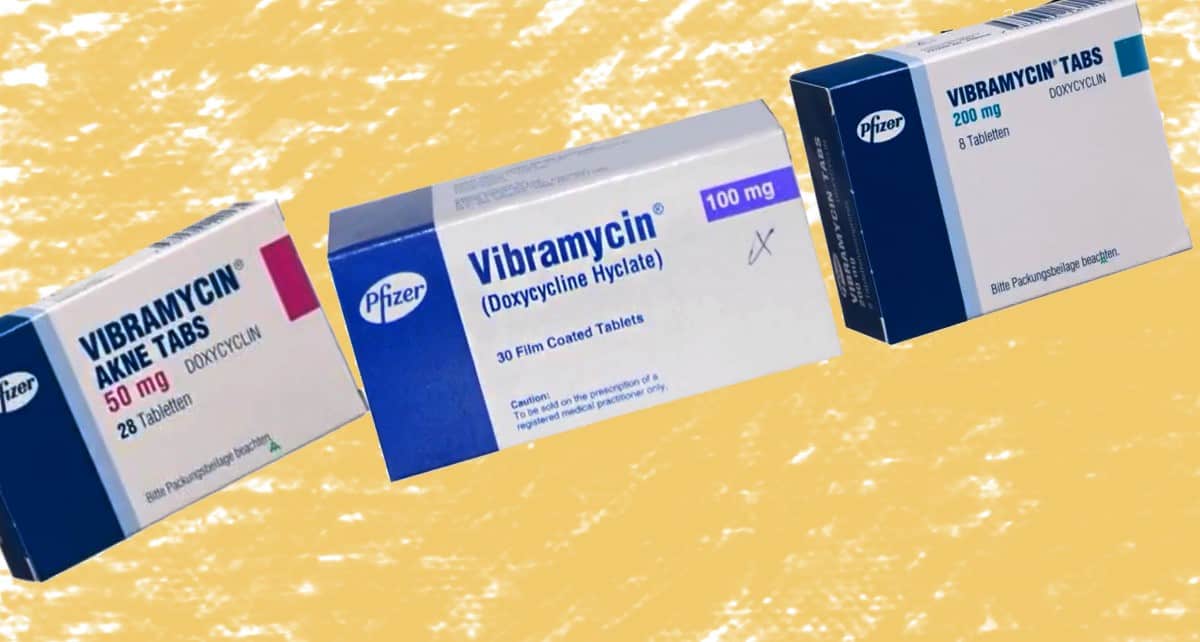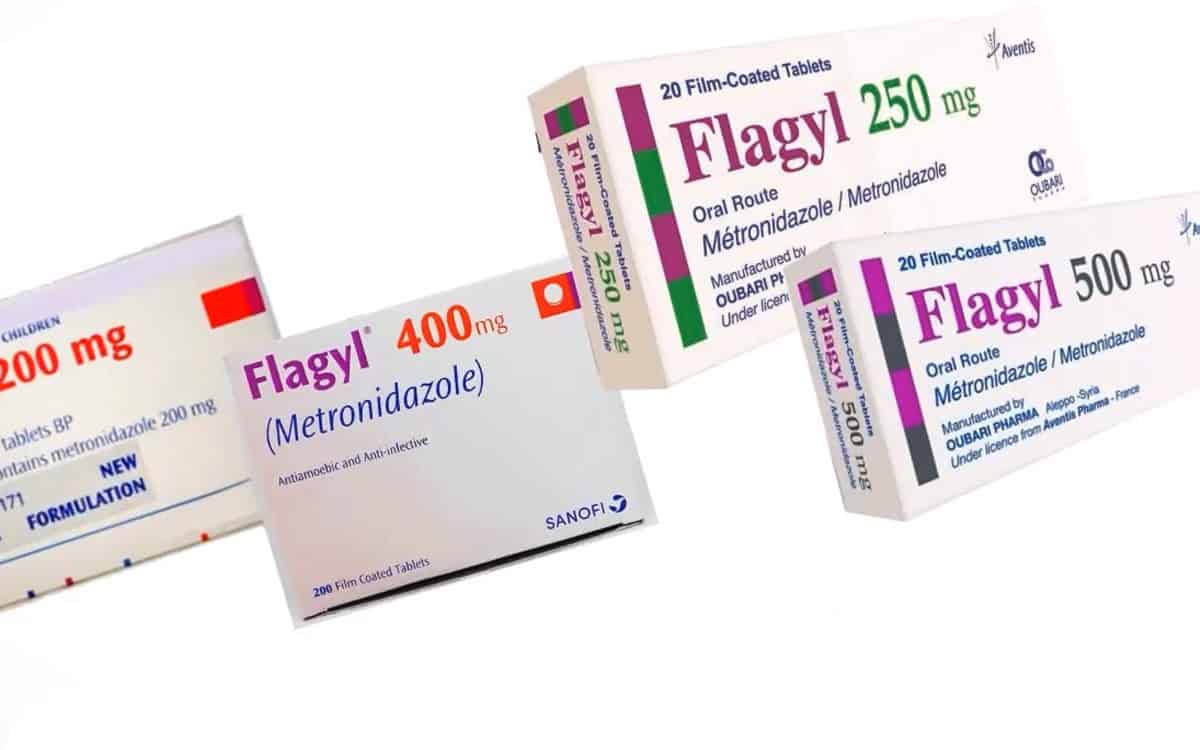Antibiotics are chemical compounds that can either kill or inhibit the growth and reproduction of bacteria. However, over the years, the use of the term antibiotics has broadened and is being used by the non-medically trained to refer to all drugs that can kill or inhibit the growth of any microorganisms like protozoa and fungi.
When preparing for SHTF situation, the ideal antibiotics to stockpile are those that cover a broad range of infections. You might also want to consider those with a lower associated risk and adverse effects compared to other popular antibiotics. The top four SHTF antibiotics we’d like recommend are co-amoxiclav, azithromycin, doxycycline, and metronidazole.
Why stock on Antibiotics?

Before the discovery and subsequent public use of Penicillin in 1945, various infectious diseases were rampant all over the world. The average life expectancy at birth was 47 years old. This is attributed to the leading cause of death: communicable diseases.
Ten years after Penicillin was made available for public use, the life expectancy at birth in the U.S. rose to 78.8 years. Communicable diseases became more of a problem of the older, immunocompromised generation.
When SHTF, there might be no pharmaceutical companies to mass-produce medicines and antibiotics. Similarly, supplies to make them at home may become scarce. Thus, these drugs can become a rarity. More so since antibiotics have a limited shelf life.
A common cold, cough, or even a tooth infection is now potentially life-threatening. Survival can greatly depend on having antibiotics on hand. Owning antibiotics can be the difference between preppers surviving, and non-preppers dying from a treatable disease.
This is why prepping should be done even on a small scale to increase the rate of survival when SHTF.
Understanding Expiry Dates
Before delving into the list, we must first understand what the expiry date of drugs means. The expiry dates printed on the container or wrapper is the time frame the pharmaceutical company guarantees that the drug is 100% potent.
Beyond this, the potency of any drug gradually decreases as the active compounds naturally break down. This can take years until the drug is completely useless, but improper storage can hasten the process.
As a general rule, tablets will keep the longest, next is powder in capsules and powder drug preparations that needs to be reconstituted. Liquid drugs both injectable and ingestible, even the ones enclosed in a gel capsule will degrade the fastest and should be avoided.
Powdered drugs for injection that have been reconstituted will only last for a few hours, and as low as 1 hour in refrigeration before losing their potency.
Essential Antibiotics when SHTF
- Amoxicillin + Clavulanic acid aka Co-amoxiclav
- Azithromycin
- Doxycycline
- Metronidazole
Amoxicillin + Clavulanic Acid aka Co-amoxiclav

Popular Brand Name/s: Augmentin
Drug Class: Penicillin derived beta-lactam antibiotic
Shelf life after expiry date: At least 5 years and can be longer if stored properly.
Available preparations:
- Tablets: 375mg, 625mg, and 1g.
- Powder for Oral Suspension: 156.25 mg/5 ml, 312.5 mg/5 ml, and 457 mg/5 ml.
- Powder for Injection (needs reconstitution): 600mg, and 1.2g
Indication/Uses:
- Sinusitis
- Tonsillitis
- Ear infection
- Bronchitis
- Pneumonia
- UTI
- Gonorrhea
- Skin infection
- Soft-tissue infections (Oral abscess).
Contraindication:
- Penicillin allergy or previous history of jaundice after taking the drug.
Dosing schedule:
- Mild to moderate infections: 375mg every 8 hours, OR 625mg every 8 to 12 hours, OR 1g every 12 hours for 14 days.
- Severe infections, recurrent UTI, and pneumonia: 1g every 8 to 12 hours for 14 days.
Amoxicillin by itself is an extremely versatile drug and treats a wide range of infections. But due to the misuse of beta-lactam drugs, some bacteria have developed some resistance and produces an enzyme that breaks down the drug.
This is where clavulanate/clavulanic acid comes in. It deactivates this enzyme, ensuring that the active compound of the drug remains potent. This is why this combination is superior to regular amoxicillin.
Azithromycin

Popular Brand Name/s: Zithromax, Zpack
Drug Class: Macrolide antibiotic
Shelf life after expiry date: At least 5 years and can be longer if stored properly.
Available preparations:
- Tablets: 250mg and 500mg
- Powder for Oral Suspension: 1g
- Powder for Injection (needs reconstitution): 500mg/vial
Indication/Uses:
- Alternative for people with Penicillin allergy
- Sinusitis
- Tonsillitis
- Ear infection
- Bronchitis
- Pneumonia
- Pelvic Inflammatory diseases (PID): infections of the female reproductive organs.
- UTI
- Chlamydia
- Gonorrhea
- Skin infection
- Soft-tissue infections.
Contraindication:
- Allergy to azithromycin, erythromycin, or other macrolide antibiotics.
- Liver disease
Dosing schedule:
- Throat infections, uncomplicated skin infections, and pneumonia: 500mg once on Day 1, followed by 250mg once a day up to Day 7 to 10.
- Sinusitis: 500mg once a day for 3 days.
- Sexually Transmitted Infections (STIs): 1g (1000mg) single dose
- PID: 500mg once a day for 2 days, followed by 250mg once a day for 5 more days.
Azithromycin is a prepper’s next drug of choice if you notice that Co-Amoxiclav is not working. It’s better than Clarithromycin, another macrolide drug that is widely suggested by other prepper websites due to its longer half-life in the body which shortens the duration of treatment.
Doxycycline

Popular Brand Name/s: Vibramycin, Monodox, Adoxa, Oracea
Drug Class: Synthetic tetracycline antibiotic
Shelf life after expiry date: At least 5 years and can be longer if stored properly.
Available preparations:
- Capsule: 50mg, 75mg, 100mg, and 150mg
Indication/Uses:
- Post-exposure prophylaxis for Anthrax
- Prophylaxis (to prevent infection) for leptospirosis, a bacterial infection from urine of infected rats/animals
- Relapsing fevers and louse born illnesses
- coli diarrhea aka Traveler’s Diarrhea
- Some lung infections
- STIs
- Prophylaxis for Malaria
Contraindication:
- Allergy to doxycycline, pregnancy and lactating, children <8years except for Anthrax
Dosing schedule:
- Post-exposure prophylaxis for Anthrax: 100mg every 12 hours for 60days
- Treatment for Anthrax: 100mg every 12 hours for 7-10 days for skin Anthrax; 200mg single dose, followed by 100mg every 12 hours plus an antibiotic for 2 weeks until clinically stable.
- Leptospirosis prophylaxis: 200mg once a week during the duration of stay in an area with leptospirosis, and then 200mg on the last day.
- Louse born illnesses: 100 to 200mg single dose
- Traveler’s Diarrhea prophylaxis: 200mg single dose on the 1st day of travel, then 100mg once daily throughout the stay in the area.
- Respiratory infections: 100mg twice a day x 10 days
- STIs: 100mg twice a day x 7 days
- Malaria prophylaxis: 100mg daily starting 1-2 days before travel to the malaria-infested area, continued daily during the stay, and for 4 weeks after leaving the area.
There are misconceptions about the safety of Doxycycline for prolonged storage due to the known kidney damaging effect of expired natural tetracycline antibiotics. However, Doxycycline is a synthetic tetracycline that lacks the precursor for the kidney damaging compound. That is why it is highly unlikely for Doxycycline to become toxic after passing its expiry date.
When SHTF, biochemical warfare which includes the use of Anthrax is a possibility. Survival when exposed to Anthrax can be guaranteed by an adequate stock of doxycycline.
Metronidazole

Popular Brand Name/s: Flagyl
Drug Class: Nitroimidazole antibiotic and antiprotozoal
Shelf life after expiry date: At least 4 years and can be longer if stored properly.
Available preparations:
- Tablets: 250mg and 500mg
- Capsule: 375mg
- Intravenous Infusion: 500mg/100ml
Indication/Uses:
- Deep soft tissue infections
- Intestinal amoebiasis and other protozoal infections
- Bacterial Vaginosis (Vaginal itching + discharge)
Contraindication:
- Allergy to imidazole
Dosing schedule:
- Deep tissue infections: 1 to 1.5g loading dose, followed by 500mg to 750mg every 6 hours for 7 to 10 days or up to 2 to 3 weeks for severe cases.
- Amoebiasis: 500mg to 750mg every 8 hours for 5 to 10 days.
- Bacterial Vaginosis: 2g single dose
This is an essential drug in prepping because aside from having antibacterial properties, it also exerts some effect against protozoal infections which commonly causes excessive diarrhea.
Antibiotics to Avoid
- Plain Amoxicillin – amoxicillin alone has become less effective due to the widespread occurrence of bacteria resistant to penicillin. This is why the recommended preparation in this list Co-Amoxiclav (Amoxicillin + Clavulanic acid combination).
- Fluoroquinolones –are antibiotics with names ending in ofloxacin (Ciprofloxacin, levofloxacin, moxifloxacin, etc.). This drug class is restricted in a lot of countries due to its DNA damaging effect.
- Natural Tetracycline antibiotics – these drugs are not recommended for storage. They produce a toxic compound when they degrade, which causes kidney damage. Doxycycline is a synthetic tetracycline and does not form a toxic compound when it degrades.
Things to Consider Before Using Antibiotics
These SHTF antibiotics for preppers, as well as all antibiotics, have a chance to cause an adverse drug reaction or severe life-threatening complications. Overdosing can cause toxicity, while underdosing can lead to bacteria forming resistance. With these in mind, it is essential to learn when it is appropriate to take an antibiotic, or when to stop taking it.
Cough, Colds, and Sinusitis

Before taking any antibiotics, determine first if the cause of the symptoms is bacterial. Antibiotics have no effect on viruses, and are usually self-limiting and get better without the need for antiviral medicines.
Viral infections are the most common cause of respiratory tract infections. If the duration of the symptom is less than 5 days, then it is more likely to be viral. Despite this, viral infections often pave the way for a bacterial infection to occur. Which is why you have to be vigilant in assessing the progression of your symptom.
The color of the phlegm can also serve as a rough guide on the cause of the infection. Viral infections tend to produce clear phlegm and nasal secretions, while bacterial can range from green to yellow and is produced in copious amounts.
Another symptom to check is the presence of fever. Viral infection usually presents with a low-grade fever between 99.5° F and 100.3° F. Bacterial infections often present with a high-grade fever of >100.4° F. This is not always the case, so you will have to correlate the fever with other findings.
Sore Throat
Bacterial infections are often localized, compared to a more widespread effect of a virus. However, viral infections are still the most common cause of a sore throat. Before using an antibiotic, inspect your throat first if there is extreme redness, swelling, and discharge. In addition to this, determine how long you’ve been having the symptom.
Diarrhea
Diarrhea is having loose watery stools three or more times a day. It is our body’s way of getting rid of gastric irritants. Normally, a stool sample is taken to the lab and checked for the presence of signs of bacterial infections, or protozoal infections. In an SHTF situation, this might be impossible to do.
As such, we have to rely on assessing the duration of diarrhea, the characteristic of the stool, and other associated symptoms. Diarrhea that lasts for more than 2 days, and is causing severe abdominal pain and discomfort is highly suspicious of being caused by a microorganism.
Painful Urination
Painful urination can be due to urinary stones, STIs, or urinary tract infections. Before using an antibiotic, observe first for signs of STI like urethral discharge, vaginal discharge, abnormalities on the skin surface, and abnormal smell.
Women are more likely to suffer from UTI due to the shorter length of their urethra. UTI can sometimes be associated with painful, crampy bladder, and low back pain.
Skin and Soft Tissue Infections

A painful wound, not healing, produces purulent discharge, swollen, and with a reddish border is infected. If the wound is deep and large, it may be appropriate to combine Metronidazole with either Amoxicillin or Azithromycin.
Stopping Antibiotic Use
Unless you experience untoward effects, one must never cut short the duration of antibiotic treatment even if you’re already feeling well. Underdosing leaves some target bacteria alive, which can potentially evolve to be resistant to the previous drug class used.
As a general rule, people with liver and renal diseases or dysfunction should not self-medicate with antibiotics.
Prolonging the Life of Antibiotics
There have been recent studies that antibiotics and other medications remain potent even after reaching their printed expiry date. The FDA has recently approved the continued storage of a batch of expired Doxycycline stockpile. However, improper storage of medicines undeniably hastens the process of degradation.
The best way to store medicines is to keep them in an airtight container, keep them dry, away from direct sunlight, and stored them in a cool environment or a refrigeration unit. A lot of tested expired antibiotics and drugs were found to still be potent at least 5 years after their expiry dates, and some even suggest that it can remain potent longer.
Unfortunately, reconstituted powdered medicines need to be used immediately as it degrades rapidly even if refrigerated. Preppers should have dedicated airtight storage, that is kept in a cool place to store these antibiotics.

